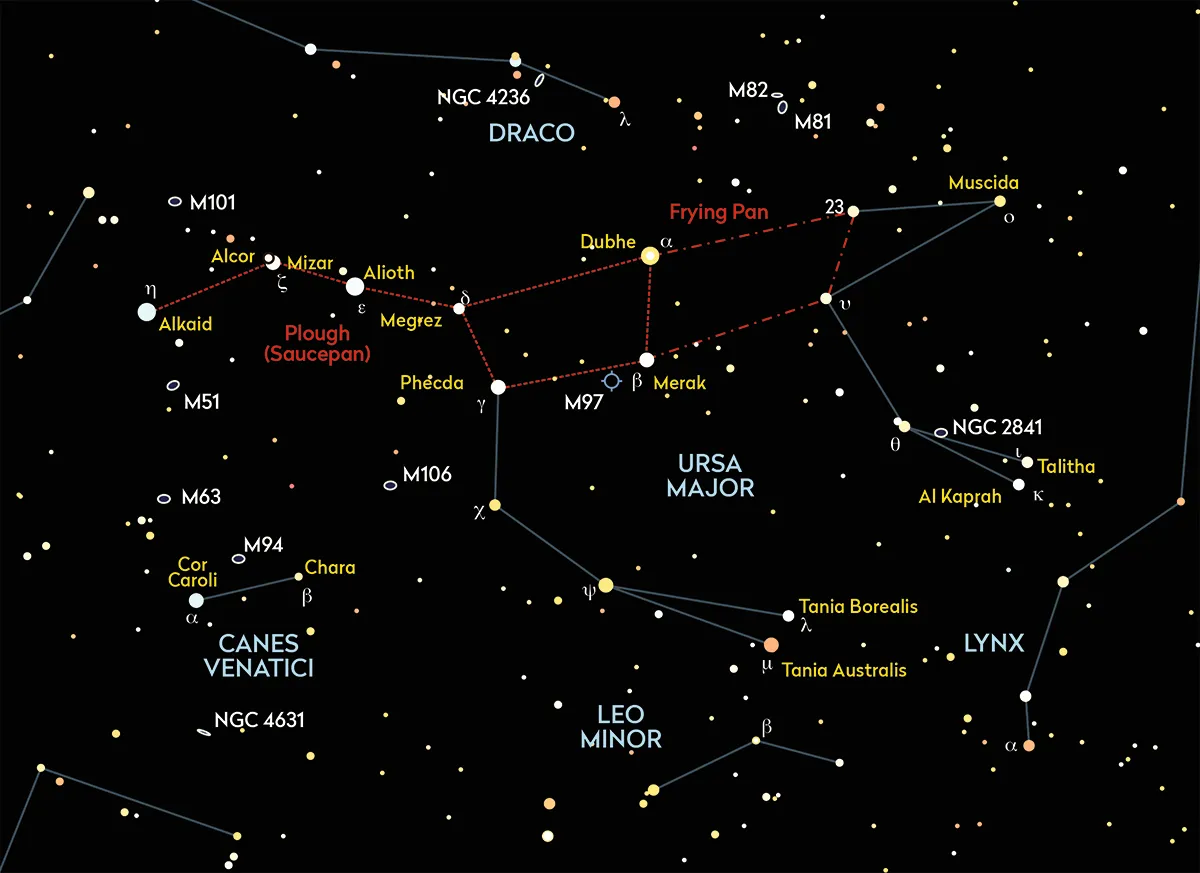Whether or not you like the idea of the Plough asterism being referred to as ‘the Saucepan’, the name works well in modern times – so well that the Saucepan can be extended to become the Frying Pan by incorporating 23 and Upsilon (υ) Ursae Majoris into the arrangement.
Keep going and eventually you’ll arrive at Muscida (Omicron (ο) Ursae Majoris), the star that represents the nose of the Great Bear.

The name Muscida comes directly from the Latin for ‘muzzle’.
Muscida has a spectral classification of G4 II-III; a yellow (G4) star between the bright-giant (II) and normal-giant (III) stages of stellar evolution.
It lies at a distance of 182 lightyears and is 138 times more luminous than our Sun.
It is estimated to be 15 times larger than the Sun and like our own star rotates quite slowly: 3km/s compared to the Sun’s 2km/s.
It has a shared proper-motion companion, a dim 15th-magnitude M1 red dwarf star which lies at a distance of 400 AU from the primary.

From Earth, the separation is 7.1 arcseconds. It’s not known whether the pair are orbitally linked.
If they are, the orbital period would be at least 4,100 years – too long to accurately determine at present.
An extrasolar planet was detected in orbit around Muscida in 2012.
Designated Omicron Ursae Majoris b, this is a gas giant 4.1 times larger than Jupiter, which takes 1,630 days to orbit the star at a distance of 3.9 AU.
This guide originally appeared in the February 2023 issue of BBC Sky at Night Magazine.
